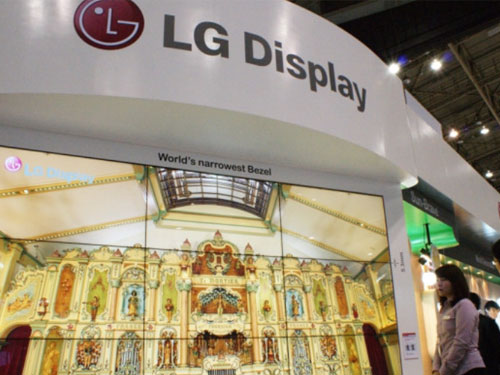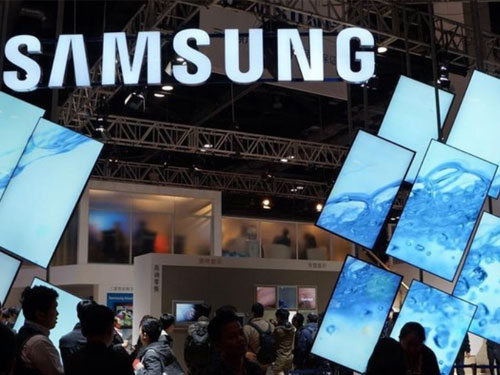LG, Samsung have given up on LCD main push OLED panel
 In addition, Samsung, another key player in South Korea, has been closing down its 7th-generation line factory and two 5th-generation line factories for three consecutive years. The company is now focusing on building two large-scale OLED panel factories. In 2017 alone, Samsung allocated $8.8 billion to expand production capacity, converting some LCD screen factories into organic display facilities.
In addition, Samsung, another key player in South Korea, has been closing down its 7th-generation line factory and two 5th-generation line factories for three consecutive years. The company is now focusing on building two large-scale OLED panel factories. In 2017 alone, Samsung allocated $8.8 billion to expand production capacity, converting some LCD screen factories into organic display facilities.
 In July this year, LGD also announced plans to build a new joint venture OLED panel plant in Guangzhou, with an investment of around 180 billion yen. This will be LGD’s first large-scale OLED factory in China, and it is expected that issues such as OLED cost and production capacity will gradually be resolved.
It’s clear that Korean manufacturers are accelerating the phase-out of smaller and medium-sized LCD panels, and the shift toward OLED is becoming increasingly evident. However, this has led to a tighter supply of small and medium-sized LCD panels, especially for mobile phone displays, which are facing even greater shortages.
Currently, only a few companies like AUO, Innolux, Caijing, and Huaying still operate four, five, and six-generation small and medium-sized panel plants. While the competition between LCD and OLED is intensifying, it remains unclear who will dominate in the short term.
Industry analysts suggest that the life cycle of LCD TV business could last at least 5–10 years. Especially in the large-size TV market, LCDs are still booming due to limited OLED production capacity and high prices. Meanwhile, several upstream LCD panel companies in China remain optimistic about large-size LCDs and have started investing in new factories. As a result, domestic panel makers are likely to seize new opportunities.
At present, LCD panels cannot disappear overnight, nor can OLEDs immediately become the dominant technology. However, over the next 5–10 years, the color TV display industry is expected to undergo significant changes. Still, any advanced technology needs strong content support to truly thrive.
In July this year, LGD also announced plans to build a new joint venture OLED panel plant in Guangzhou, with an investment of around 180 billion yen. This will be LGD’s first large-scale OLED factory in China, and it is expected that issues such as OLED cost and production capacity will gradually be resolved.
It’s clear that Korean manufacturers are accelerating the phase-out of smaller and medium-sized LCD panels, and the shift toward OLED is becoming increasingly evident. However, this has led to a tighter supply of small and medium-sized LCD panels, especially for mobile phone displays, which are facing even greater shortages.
Currently, only a few companies like AUO, Innolux, Caijing, and Huaying still operate four, five, and six-generation small and medium-sized panel plants. While the competition between LCD and OLED is intensifying, it remains unclear who will dominate in the short term.
Industry analysts suggest that the life cycle of LCD TV business could last at least 5–10 years. Especially in the large-size TV market, LCDs are still booming due to limited OLED production capacity and high prices. Meanwhile, several upstream LCD panel companies in China remain optimistic about large-size LCDs and have started investing in new factories. As a result, domestic panel makers are likely to seize new opportunities.
At present, LCD panels cannot disappear overnight, nor can OLEDs immediately become the dominant technology. However, over the next 5–10 years, the color TV display industry is expected to undergo significant changes. Still, any advanced technology needs strong content support to truly thrive.Communication With Built-in Mastic Cold Shrink Tube
High rate silicone communication cold shrinkable tube through the special silicone rubber raw materials made of high rate cold shrinkable tube. The cold shrinkable tube has the advantages of large shrinkage rate (4 and 5 times shrinkage), excellent physical and mechanical properties, puncture resistance, good sealing and protection performance and long-term protection. Products through the ROHS certification standard colour is black and grey, other colours can be customized. Suitable for communication feeder, cable TV connection joints waterproof moisture sealing, wire and cable connection insulation sealing; other types of connectors, size of the head of the reducer and shaped parts, antenna feeder reducer joints insulation protection.
Cold Shrink Tubing for Communication,cold shrink tube,Built-in Mastic Cold Shrink Tube,Shrink tube
Mianyang Dongyao New Material Co. , https://www.mydyxc.com